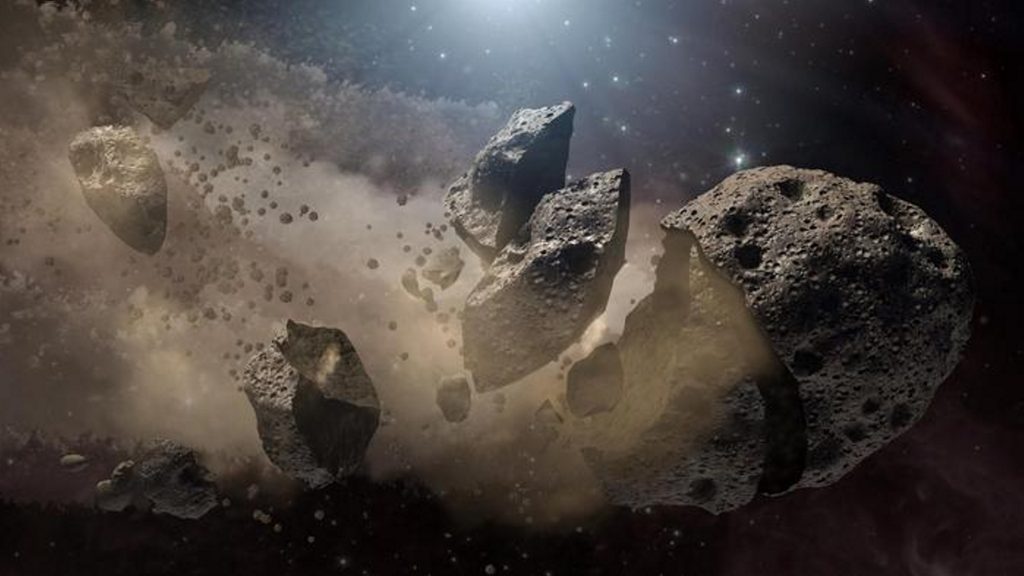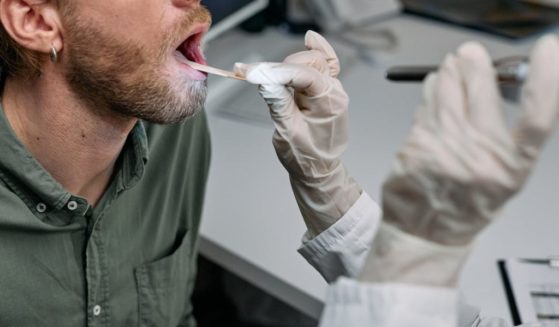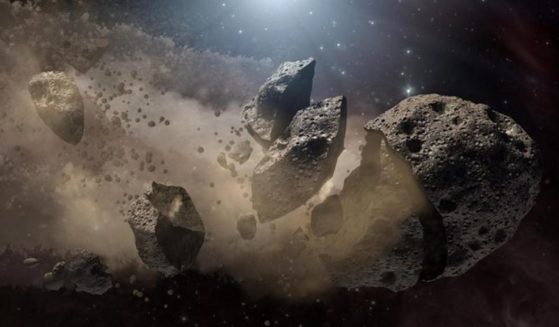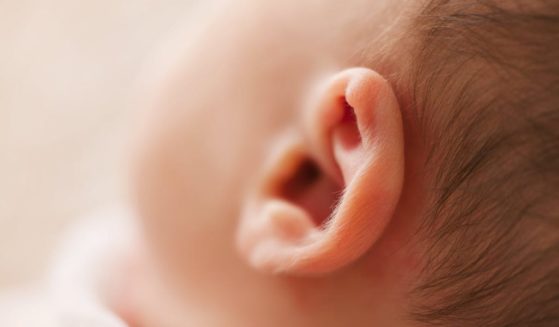Cosmic Dust From Space Sparked Life On Earth, Study Finds

Cosmic dust from space could have kick-started life on Earth, a new study suggests.
Researchers believe space dust from colliding asteroids may have fallen into our planet’s ice sheets and provided the crucial elements to the formation of the origins of life.
Scientists say the chemical reactions that prompted life to sprout could not have happened without external influence due to the lack of necessary elements on Earth.
A research team now contends that these essential elements were imported via dust falling from space.

Before life existed on Earth, there had to be chemistry to form organic molecules from the chemical elements nitrogen, sulfur, carbon and phosphorus.
In order for the necessary chemical reactions to be promoted and maintained, these elements would have had to have been present in abundance as well as regularly replenished.
On the Earth itself, however, these elements were – and still are – in short supply.
The elementary building blocks of life were so rare that chemical reactions would have quickly become exhausted if they ever managed to get going at all.
Geological processes such as erosion and the weathering of the Earth’s constituent rocks were also unable to ensure a sufficient supply, as the Earth’s crust contained too few of these elements.
Nevertheless, during the first 500 million years of the Earth’s history, prebiotic chemistry developed that managed to produce organic molecules such as RNA, DNA, fatty acids and proteins, on which all life is based.
But the mystery of where the required quantities of life-giving elements came from remains.
Geologist Dr. Craig Walton believes the answer lies in cosmic dust.
This dust is created in space when asteroids collide with each other and, even today, around 30,000 tonnes of dust still falls to Earth each year.
In the early days of our planet, however, this dust rained down in far greater volumes – amounting to millions of tonnes per year.
These dust particles contain an abundance of nitrogen, carbon, sulfur and phosphorus and would therefore have the potential to set a chemical cascade in motion.
Although the dust disperses widely Dr. Walton says ‘things look different’ if transportation processes are taken into account.
Wind, rain or rivers collect cosmic dust over a large area and deposit it in concentrated form at certain locations.
To ascertain whether cosmic dust could be the source that jump-started life-bringing chemical reactions, Dr. Walton – along with a team of sedimentation experts and astrophysicists from the University of Cambridge – developed a model that simulated how much cosmic dust fell to Earth in the first 500 million years of our planet’s history and where it could have accumulated on the Earth’s surface.
Their study, published in the journal Nature Astronomy, showed there could have been places on the early Earth with an extremely high concentration of cosmic dust, with supplies constantly replenished from space.
However, dust rains decreased rapidly and sharply after the formation of the Earth.
After 500 million years, the dust flow was far smaller than in the year zero.
The researchers attribute occasional upward spikes to asteroids that broke apart and sent a tail of dust toward Earth.

Most scientists assume the Earth was covered by a magma ocean for millions of years, which would have prevented the transport and deposition of cosmic dust for a long time.
However, Dr. Walton explained: “More recent research has found evidence that the Earth’s surface cooled and solidified very quickly and that large ice sheets formed.”
According to the team’s simulations, these ice sheets could have provided the best environment for the accumulation of cosmic dust.
Melt holes on the glacier surface – known as cryoconite holes – would have allowed not only sediments but also dust grains from space to accumulate.
Over time, the life-giving elements were released from the dust particles.
And as soon as their concentration in the glacial water reached a critical threshold value, chemical reactions began of their own accord – leading to the formation of the organic molecules that are the origin of life.
It’s possible that chemical processes got underway even at the icy temperatures that prevail in the melt holes.
“Cold doesn’t disrupt organic chemistry,” Dr. Walton said.
“On the contrary: reactions are more selective and specific at low temperatures than at high temperatures.”
Other researchers have also shown that simple ring-shaped ribonucleic acids (RNA) form spontaneously in such meltwater soups at temperatures around freezing and then replicate themselves.
A weak point in the argument could be that at low temperatures, the elements required to build up the organic molecules dissolve only very slowly from the dust particles.
“This study will certainly trigger a contentious scientific debate,” Dr. Walton added.
“But it will also give rise to new ideas about the origin of life.”
As early as the 18th and 19th centuries, scientists were convinced that meteorites brought the elements of life to Earth.
“Since then, however, hardly anyone has considered the idea that prebiotic chemistry was set in motion primarily by meteorites,” Dr. Walton said.
“The meteorite idea sounds compelling, but there’s a catch…”
Dr. Walton explained that a single meteorite supplies these substances only in a limited environment: where it hits the ground is random, and further supplies aren’t guaranteed.
“I think it’s unlikely that the origin of life depends on a few widely and randomly scattered pieces of rock,” he said.
“Enriched cosmic dust, on the other hand, I think makes for a plausible source.”
Dr. Walton’s team now plans to test their theory experimentally, using large reaction vessels to recreate the conditions that might have prevailed in the primeval melt holes, then setting the initial conditions to those that probably existed in a cryoconite hole four billion years ago before waiting to see whether any chemical reactions of the kind that produce biologically relevant molecules do indeed develop.
Produced in association with SWNS Talker
The Western Journal has not reviewed this story prior to publication. Therefore, it may not meet our normal editorial standards. It is provided to our readers as a service from The Western Journal.
Truth and Accuracy
We are committed to truth and accuracy in all of our journalism. Read our editorial standards.











